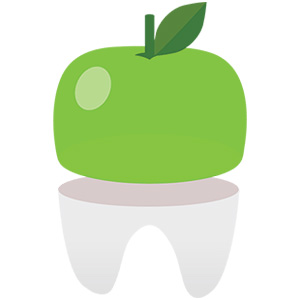Will Clear Aligners or Braces Change My Face?
When most people think about braces or clear aligner treatment, straighter teeth is what instantly comes to mind. While, yup, as a Brooklyn orthodontist straightening teeth is a big part of what I do, orthodontics goes beyond that.
Treatment also focuses on creating a healthy bite (how the teeth in the upper and lower arches come together) and addressing any skeletal discrepancies, such as a narrow or too-small jaw. And to maximize health, function, and aesthetics, I design each patient’s smile to complement their facial features, while keeping the chewing muscles, temporomandibular joints (TMJ), and airway in mind.
So, yes, braces, Spark™ Aligners, and Invisalign® can change your face shape. That said, the extent of the changes varies significantly and will depend on your specific case and the goals of treatment. For many people, any differences in their face before and after braces will be subtle. However, in certain patients, the changes are more dramatic.
Orthodontics vs. Dentofacial Orthopedics
First, to manage expectations, I want to cover a few realities. As an orthodontist, I’m technically a certified specialist in orthodontics and dentofacial orthopedics.
Though orthodontics and dentofacial orthopedics are related and often performed together, they’re not the same thing. Orthodontics focuses on aligning the teeth and bite, while dentofacial orthopedics involves the bones.
What is dentofacial orthopedics?
Dentofacial orthopedics means using appliances to guide jaw and facial growth, generally in childhood or the early teen years when patients are still growing. With either a single phase of treatment or phase 1 treatment followed by clear aligners or braces, we can fix facial asymmetry, change the size or positioning of the jaw, and achieve other skeletal improvements.
What about adults?
Once you’re done growing, skeletal changes are more limited and altering the actual bone structure of your face requires surgery. While you can absolutely still see positive changes in your facial appearance after orthodontics, it’s usually a byproduct of aligning the teeth and jaws in a way that works for your facial features.
5 Ways Orthodontic Treatment Impacts Facial Aesthetics
Altering Angles
People sometimes say that braces can change your nose, make your face longer, etc. Again, orthodontic treatment won’t transform the bone structure of your nose itself or cause your face to grow in adulthood. One of the reasons you might notice a difference in your face shape or nose before and after braces or aligners is related to angles.
When planning your treatment, I map out the ideal position for each tooth in relation to your other teeth, gums, jaw, lips, and cheeks. This precision treatment planning can improve the angles between your lips and your nose or your lips and your chin, making your features look slightly different.
Enhancing Your Facial Profile
Malocclusions, such as an underbite, overbite, open bite, or crossbite, are often related to the jaw. The misalignment can have a big effect on your facial appearance and profile, particularly in cases of a protruding or retruding jaw.
Optimizing the relationship between the upper and lower jaw with clear aligners or braces changes your facial profile for the better. In fact, your profile is something I take into account when creating your treatment plan.
Providing Lip and Cheek Support
Patients sometimes ask, “Do braces change your lips?” The answer is, yes, they can. When teeth are sticking out, crooked, or shifted back, it interferes with the positioning of your lips and might even make your cheeks look sunken.
The effect is even more pronounced in cases of an open bite (the upper and lower front teeth don’t meet at all), where the lips have to stretch to cover the teeth.
Getting a straight, broad smile that goes from corner to corner will give your lips and cheeks proper support. That’s why I spend a lot of time mapping out your treatment before you start. I use a 3D, digital simulation of your mouth to finetune every detail – from positioning the upper teeth to follow the curve of the lower lip to making sure the edges of your bottom teeth are parallel with the bottom lip when you smile.
This can enhance your facial contours and even give the lower half half of your face a little lift, making your cheeks and lips look fuller and the skin around your mouth tighter and more youthful.
Improving the Jawline
Clear aligners and braces can change your jawline if there’s a mismatch between the upper and lower jaw. For example, an excessive overbite, or deep bite, can create the appearance of a “weak” chin.
Straightening the teeth and correcting the overbite, will make the jaw and chin look stronger and more defined. With a problem like an underbite, where the lower jaw sticks out, treatment can do the opposite and help soften the jawline.
Creating Better Facial Proportions
Orthodontic treatment helps to make your smile the focal point of your face, giving you a more balanced, proportionate facial appearance. By positioning the midline of your upper front teeth in accordance with your features, I can also create better symmetry.
Additionally, if you’re compensating for a bad bite, such as a crossbite, by shifting the jaw to the side, simply being able to eat, chew, and close your mouth correctly will go a long way in making your face look more symmetrical.
Get a Smile Tailored to Your Unique Facial Features
The fact that clear aligners and braces can change your face highlights the importance of seeing a certified specialist in orthodontics for treatment. We have extensive training and experience in correcting dental and skeletal irregularities in a way that complements your features.
At Fresh Orthodontics in Brooklyn, I use digital scanning and state-of-the-art treatment planning software to design YOUR perfect smile. Book a complimentary consultation today to find out how my team and I can help you look and feel your absolute best!













